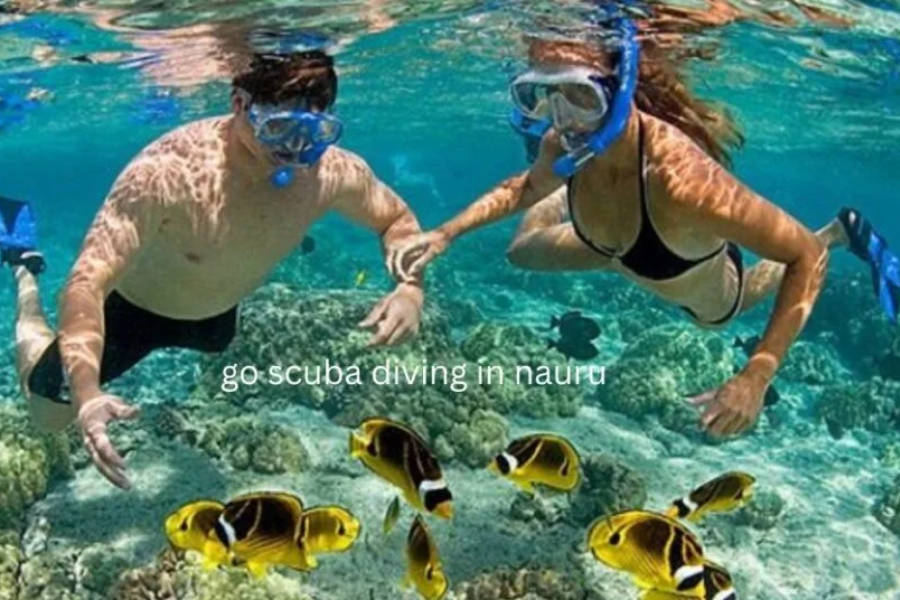Exploring the Underwater Paradise: Go Scuba Diving in Nauru
Nestled in the heart of the Pacific Ocean, Nauru is often overlooked by travelers due to its small size. However, this hidden gem offers an unparalleled experience for scuba diving enthusiasts. With its pristine waters, vibrant marine life, and unique underwater landscapes, Nauru is a must-visit destination for those seeking an unforgettable diving adventure. In this article, we will dive deep into the wonders of scuba diving in Nauru, exploring its rich marine biodiversity, iconic dive sites, and what makes this island an underwater paradise.
Discovering Nauru: An Overview
Nauru, the third smallest country in the world by land area, is located in Micronesia in the central Pacific. With a population of around 10,000 people, Nauru is primarily known for its phosphate mining history and unique cultural heritage. Despite its small size, the island boasts an impressive coastline surrounded by crystal-clear waters that teem with marine life. With a tropical climate and remote location, Nauru offers ideal conditions for scuba diving year-round.
The Marine Biodiversity of Nauru
Nauru’s marine environment is a treasure trove of biodiversity, offering divers an exceptional variety of species. The island’s coral reefs are home to a dazzling array of colorful corals, reef fish, and other fascinating marine creatures. Whether you’re a beginner or a seasoned diver, Nauru’s underwater world offers something for everyone.
Coral Reefs
Nauru’s coral reefs are some of the most pristine in the world. The vibrant colors and intricate structures of these reefs create a stunning underwater landscape that supports a multitude of marine species. Divers will be captivated by the sight of hard and soft corals, sea fans, and sponges, which are both visually breathtaking and ecologically vital to the health of the marine ecosystem.
Fish Species
The waters surrounding Nauru are home to an abundance of fish of all shapes and sizes. Schools of colorful reef fish, such as parrotfish, butterflyfish, and angelfish, are common sights. For those interested in encountering larger marine species, the island’s waters are frequented by pelagic species like barracuda, trevally, and tuna. Shark enthusiasts will also find plenty to marvel at, as Nauru is home to reef sharks and even the occasional hammerhead.
Other Marine Life
Beyond fish, Nauru’s underwater world boasts an impressive variety of other marine creatures. Endangered green and hawksbill sea turtles can often be seen gliding through the water, while rays—ranging from manta rays to eagle rays—are also frequent visitors. For the keen-eyed diver, smaller creatures like octopuses, cuttlefish, and various crustaceans can be found nestled among the coral formations.
Iconic Dive Sites in Nauru
Despite its small size, Nauru offers a range of dive sites that cater to all skill levels. From the vibrant coral gardens of Anibare Bay to the dramatic underwater cliffs at Shark Point, each dive site offers a unique experience for divers.
Anibare Bay
One of Nauru’s most popular dive sites, Anibare Bay is known for its crystal-clear waters and abundant marine life. The bay’s shallow reefs make it an ideal spot for beginner divers, allowing them to explore vibrant coral gardens and swim alongside schools of tropical fish. More experienced divers can venture deeper into the bay to discover intriguing underwater caves and overhangs teeming with life.
Buada Lagoon
Buada Lagoon offers a unique diving experience in a freshwater setting. Surrounded by lush tropical vegetation, the lagoon is tranquil and serene, offering a peaceful dive for those looking to experience something different. While the marine life here may not be as abundant as in Nauru’s coastal reefs, the lagoon is home to several species of fish and provides a distinct contrast to the oceanic dive sites.
Pinnacle Rock
Pinnacle Rock is a striking underwater formation that rises dramatically from the ocean floor to just below the surface. Divers will be awed by the steep walls adorned with colorful corals and sponges. As you explore the various nooks and crannies of the pinnacle, you’re likely to encounter an impressive diversity of marine life, including reef fish, rays, and possibly even sharks.
Shark Point
As its name suggests, Shark Point is one of Nauru’s premier dive sites for encountering sharks. Located on the outer edge of the reef, this site attracts a variety of shark species due to the ocean currents. Divers can expect to see reef sharks patrolling the waters, along with other large pelagic species like barracuda and tuna. The thrilling encounters with these apex predators make Shark Point a must-visit site for adventurous divers.
The Diving Experience: What to Expect
Scuba diving in Nauru offers a unique blend of adventure, tranquility, and natural beauty. With its remote location, dive sites are often uncrowded, allowing for a more personal and intimate diving experience. The warm, tropical waters and excellent visibility make for comfortable and enjoyable dives, while the rich biodiversity and stunning underwater landscapes provide endless opportunities for exploration.
Dive Conditions
Nauru’s tropical climate ensures warm water temperatures throughout the year, typically ranging from 26°C to 29°C (79°F to 84°F). Visibility is consistently excellent, often exceeding 30 meters (100 feet), allowing divers to fully appreciate the beauty of the underwater world. These ideal conditions make Nauru a perfect destination for divers of all skill levels, from beginners to experts.
Dive Operators and Facilities
Although Nauru is a small island nation, it has several dive operators offering guided dives, equipment rental, and certification courses. The operators are staffed by experienced instructors who know the local dive sites and marine life well. Divers can expect high-quality service with a strong emphasis on safety and marine conservation.
Conservation and Sustainable Diving
Nauru’s marine environment is a precious resource, and both the local government and dive operators are committed to its preservation. Sustainable diving practices are encouraged, including reef-friendly behaviors and minimizing environmental impact. Divers are advised to follow best practices, such as avoiding contact with coral reefs and not disturbing marine life, to help protect the delicate ecosystems.
Cultural and Historical Context
Nauru’s cultural and historical heritage adds a rich layer to the diving experience. The island’s history is intertwined with its marine environment, from traditional fishing practices to the effects of phosphate mining.
Traditional Fishing Practices
For centuries, the Nauruan people have relied on the ocean for sustenance, using traditional fishing methods passed down through generations. These practices include the use of woven nets, spearfishing, and the construction of fish traps. Learning about these traditions provides insight into the island’s cultural connection to the sea and the importance of marine resources in the Nauruan way of life.
Impact of Phosphate Mining
Phosphate mining played a significant role in Nauru’s history, affecting both its environment and economy. The extensive mining of phosphate during the 20th century led to widespread environmental degradation. However, today, there are ongoing efforts to rehabilitate the mined areas and promote sustainable development. Divers can witness the resilience of the Nauruan people as they work to preserve their natural and cultural heritage.
Practical Information for Divers
For those planning a diving trip to Nauru, it is important to be well-prepared with the right information about logistics and travel to this remote island.
Getting There
Nauru is accessible by air, with Nauru International Airport (INU) serving as the primary gateway. Flights to Nauru are limited, with connections mainly available from Brisbane, Australia, and a few Pacific island nations. It’s recommended to book flights well in advance due to limited availability.
Accommodation
Nauru offers a range of accommodation options, from budget guesthouses to mid-range hotels. While there are no luxury resorts on the island, the available lodgings are comfortable and provide essential amenities. Booking accommodation ahead of time is advised, especially during peak travel seasons.
Health and Safety
It is essential that divers ensure they are physically fit for diving, and having travel insurance that covers diving activities is highly recommended. Nauru has a small hospital, but in the event of serious medical emergencies, evacuation to a larger medical facility may be necessary. Divers should also take care to follow safety guidelines, especially when interacting with marine life.
Conclusion
Despite its small size, Nauru offers a world of underwater wonders for scuba diving enthusiasts. Its pristine coral reefs, diverse marine life, and unique dive sites provide an unforgettable diving experience. Whether you’re exploring the colorful coral gardens of Anibare Bay, navigating the steep walls of Pinnacle Rock, or encountering sharks at Shark Point, Nauru’s underwater paradise will leave you in awe. Along the way, you’ll gain a deeper appreciation for the island’s cultural heritage and the importance of conservation. So, pack your diving gear and prepare for an adventure like no other—Nauru is waiting to be discovered.






